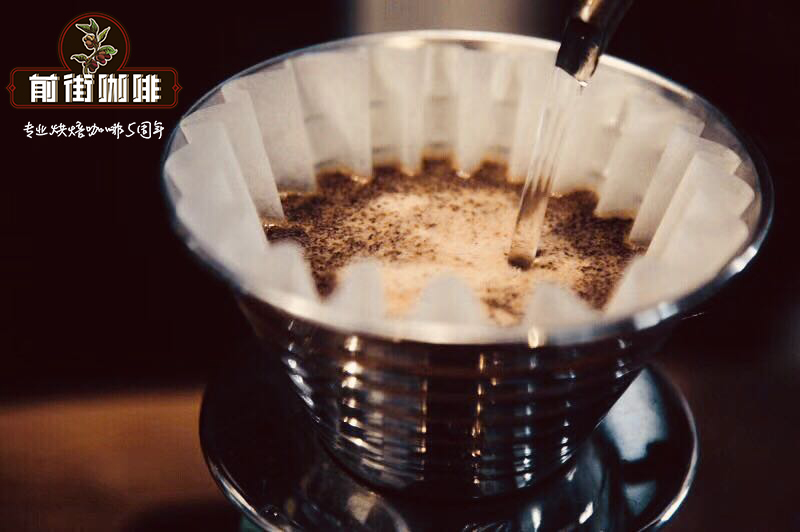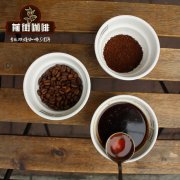How do you grind coffee beans? Why grind beans? How do coffee beans become coffee?

Professional coffee knowledge exchange more coffee bean information please follow the coffee workshop (Wechat official account cafe_style)
Which do you think is the most important in your coffee set? If it's not a bean grinder, you have to think about it. A good cup of coffee is built to grind the quality and consistency of coffee powder, and the use of a good bean grinder is the first element to maintain the quality of coffee.
"the bean grinder is the basic tool for making a good cup of coffee," said Steve Rhinehart of Internet Channel brand Advanced Prima Coffee. Kyra Kennedy, the maker of the bean grinder brand Baratza, said: "if the grinding is uneven, you don't have to extract coffee." No one buys a bean grinder because they want it. All they want is coffee with a better flavor, and the bean grinder plays a vital role in the coffee with good flavor. "
We all know that "crushing bean grinder" is better than "blade grinder", but the relationship is very complicated, not all bean grinders are the same, from size, shape and material will greatly affect the quality of grinding. "every bean grinder has its own particle size distribution," Kennedy said, in other words, the effect controls cooking. When choosing a bean grinder for your coffee shop and restaurant, you must consider many factors, especially what cooking method the bean grinder should match.
Italian bean grinder
Espresso requires the most fine grinding compared to other brewing methods (except Turkish coffee), which means that in order to get the same amount of coffee, espresso is much heavier than filtered coffee. When the boutique coffee shop offers more concentrated coffee than filtered coffee, the load of the bean grinder will be very heavy, so there is a greater need for an Italian bean grinder for espresso. Coffee seedlings believe that if you want to make more than 60 cups of lattes in an hour, for example, if the amount of powder in a cup is 16 grams, an hour is 960 grams, and about one kilogram of coffee powder, the continuous operation stability of the knife plate is very important. )
Italian bean grinder can be divided into two types: cone knife type bean grinder and flat knife type bean grinder. Both, like Ford versus Chevrolet, have their own supporters.
Cone knife type bean grinder
The cone knife grinder has been the industry standard for coffee for years: the ubiquitous Mazzer Robur and Compak K10. As the name implies, the cone knife type is conical and consists of a male and a female, which makes the grinding speed of the cone knife type higher than that of the flat knife type.
The cone knife-shaped grinding mechanism becomes a bimodal size distribution. When you look at the ground coffee powder under a microscope, the powders of similar size will gather together, mainly divided into smaller and larger particles. The smaller particles limit the flow rate of water through the coffee powder, giving the larger particles more time to reach saturation. Traditional espresso recipes rely on this way to slow down the flow rate.
The grinding result of bimodal distribution caused by cone will make the brewed espresso more saturated and full-bodied. The proponents of the flat knife type bean grinder point out that the particle size of these bimodal distribution will produce different saturation velocity, and the different saturation rate determines the extraction rate.
Flat knife type bean grinder
In recent years, people have improved on the flat knife type bean grinder. The flat knife type is composed of two consistent grinding plates that do not interfere with each other's operation, resulting in a more uniform particle size distribution, so that baristas do not have to worry about extracting coffee powder from finer particles when extracting coffee. Extract the bitter taste. The flat knife grinder cannot control the flow rate because it has less fine grinding, but it also forces the barista to fine the grinding scale (with its limits) or to prolong the cooking time. Using these bean grinders makes it easier to concentrate in large quantities, and if you want to jump out of the SCAA concentration parameters, you need a flat knife grinder to do so.
The development of the flat knife bean grinder stems from the fact that Matt Perger used the Mahlk?nig EK43 bean grinding mechanism as his drink during the 2013 World Barista Competition (see EK43 article translated by Come True Coffee). At first, EK43 was invented as a spice grinder, a 98-centimeter steel cutter (83 centimeters for Mazzer's flat-knife bean grinder). This huge cutter head helps EK43 create a particle size distribution without its right.
Whether you choose to use a fan or a heater, make sure the Italian bean grinder can adjust the temperature
Making espresso from EK43 is cumbersome, but it at least opens a new era of imitating the large size knife head of EK43, and it also creates a way to prepare espresso with coffee mechanism. The first company to respond to this new demand is the Mythos series of Nuova Simonelli. In 2015, Mahlk?nig released Peak, a bean grinder, named after the unimodal particle size distribution of the 80cm steel cutter head.
Problems with Italian bean grinder
Whether you choose a cone knife or a flat knife bean grinder, in fact all Italian bean grinders have two difficulties to overcome: the fluctuation of temperature and the grinding of residual powder.
Friction produces heat, and when grinding and cooking espresso coffee beans, because the coffee beans have to be ground very fine and constantly rub, any barista knows that the temperature fluctuation caused by the Italian bean grinder will seriously damage the parameters of espresso. During the peak period of operation in the morning, the brewing time will accelerate as the temperature of the bean grinder rises, so it can only stop running and let the machine cool.
One previous theory is that temperature fluctuations cause the cutterhead to expand and contract, but this theory has been overturned and cannot reach a temperature high enough to deform steel and titanium even at the hottest time of the bean mill. Recently, a theory has been put forward that there is a difference due to the change of coffee temperature. The lower the temperature, the easier the coffee beans are ground, and the finer the grinding. On the contrary, the higher the temperature of the coffee beans caused by the knife head, the lower the fineness. The lower the fineness, the faster the flow rate, which explains why continuous grinding changes the cooking time.
The ideal brewing coffee should involve the finest grinding, and all three companies use flat knife bean grinders.
The most advanced Italian bean grinding machine uses the fan to solve the temperature problem. When the temperature rises, the fan will start to lower the temperature of the grinder. In Mahlk?nig Peak's case, the barista kept the fan running. Nuova Simonelli adds a heater to the Mythos Clima Pro One machine. "this keeps the grinder temperature between 30 and 40 degrees," Rhinehar said. "We will not see much change in order to maintain temperature stability by increasing or cooling the temperature range.
Whether you choose to use a fan or heater, make sure that your Italian bean grinder has the function of adjusting the temperature. A cheap Italian bean grinder cannot adjust the temperature, and coarse coffee beans may turn into coffee with a lower extraction rate, so it is even less likely to cope with large amounts of demand.
For baristas, the more troublesome problem with the grinder is the residual powder. some coffee powder will stay in the grooves and cutters of the grinder, which means that whenever you grind coffee, it will be accompanied by the residual powder of some coffee beans.
Mark Prince, senior editor, said: "I think there is still a long way to go to improve the core function of grinding coffee. I am mainly worried that there will be stale beans, and there are many opportunities for grinding beans with nearly ten grams of coffee residue left behind in the grooves of the bean grinder and in the area where the knife head runs. The most important thing about coffee beans is freshness. As far as I'm concerned, there is little difference in quality between flat knife and cone knife grinder.
When discussing the problem of freshness, the residual powder is still a problem when adjusting the parameters. even if you grind two or three portions of beans, you are still not completely sure that the previously ground coffee is not in the machine. Therefore, the ground coffee will have different particle sizes, leading to uneven extraction and increasing the chance of blockage.
Important Notice :
前街咖啡 FrontStreet Coffee has moved to new addredd:
FrontStreet Coffee Address: 315,Donghua East Road,GuangZhou
Tel:020 38364473
- Prev

Are you sure pregnant women can't drink coffee? Is decaf that harmful? What is the function of decaf coffee?
Professional coffee knowledge exchange more coffee bean information Please pay attention to coffee workshop (Wechat official account cafe_style) Coffee is the most popular drink in the world, its trade volume is second only to crude oil. In recent years, coffee has been proved to have health effects, and it has been found that it has a lot of phytochemicals, which can be identified more than 300 kinds, such as caffeine, chlorogenic acid and other substances that are beneficial to the human body.
- Next

Coffee is sweet. why is coffee sweet? What's the sweet taste of coffee?
Professional coffee knowledge exchange more coffee bean information please follow the coffee workshop (Wechat official account cafe_style) black coffee is bitter? That's in the past. Today's boutique coffee manufacturers and consumers will directly look for sweetness in black coffee. We are not talking about added sugar or honey here. But in the black coffee to drink the natural pure sweetness. Is that possible? But why does coffee
Related
- Beginners will see the "Coffee pull flower" guide!
- What is the difference between ice blog purified milk and ordinary milk coffee?
- Why is the Philippines the largest producer of crops in Liberia?
- For coffee extraction, should the fine powder be retained?
- How does extracted espresso fill pressed powder? How much strength does it take to press the powder?
- How to make jasmine cold extract coffee? Is the jasmine + latte good?
- Will this little toy really make the coffee taste better? How does Lily Drip affect coffee extraction?
- Will the action of slapping the filter cup also affect coffee extraction?
- What's the difference between powder-to-water ratio and powder-to-liquid ratio?
- What is the Ethiopian local species? What does it have to do with Heirloom native species?

